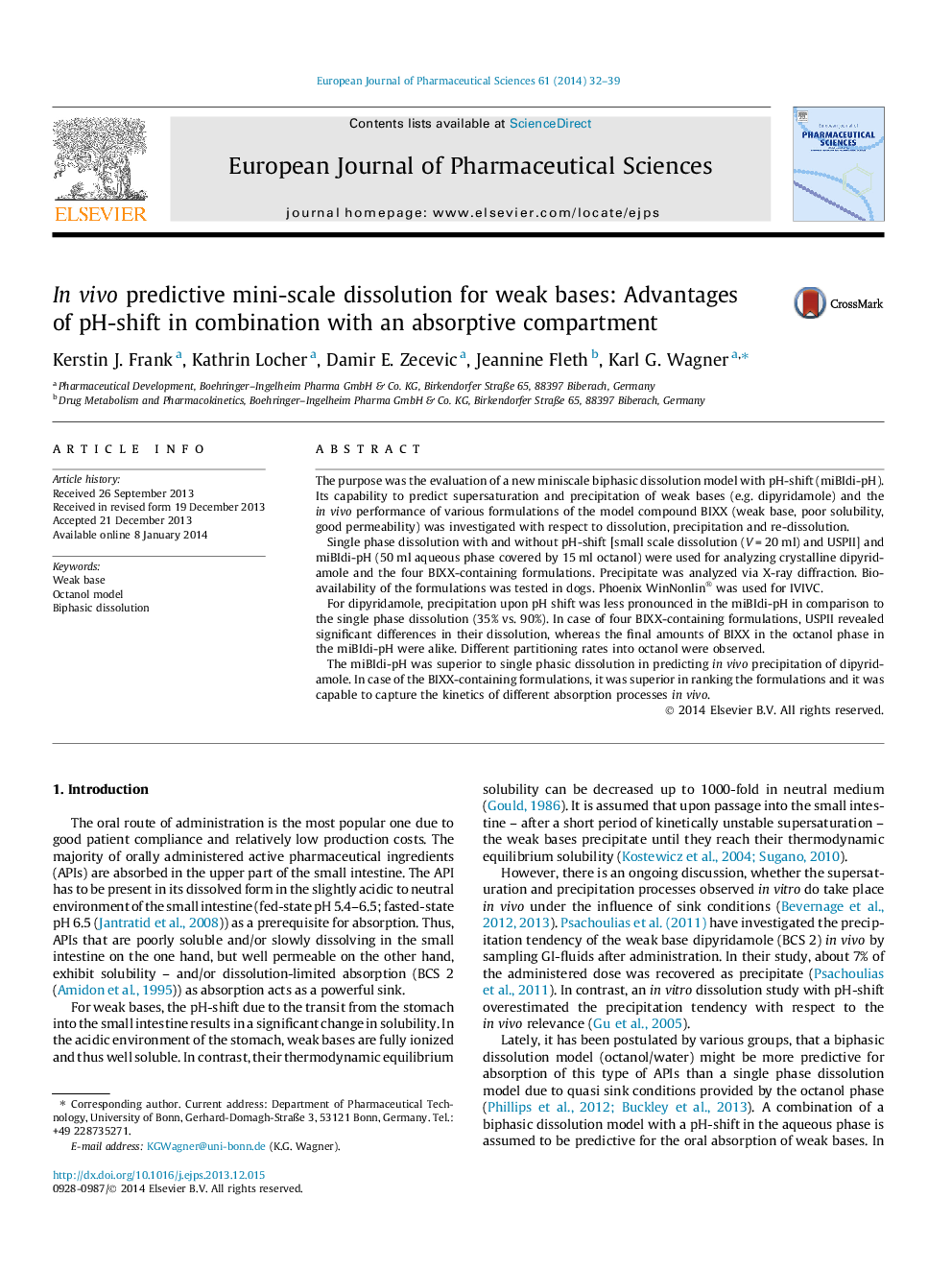| Article ID | Journal | Published Year | Pages | File Type |
|---|---|---|---|---|
| 2480515 | European Journal of Pharmaceutical Sciences | 2014 | 8 Pages |
The purpose was the evaluation of a new miniscale biphasic dissolution model with pH-shift (miBIdi-pH). Its capability to predict supersaturation and precipitation of weak bases (e.g. dipyridamole) and the in vivo performance of various formulations of the model compound BIXX (weak base, poor solubility, good permeability) was investigated with respect to dissolution, precipitation and re-dissolution.Single phase dissolution with and without pH-shift [small scale dissolution (V = 20 ml) and USPII] and miBIdi-pH (50 ml aqueous phase covered by 15 ml octanol) were used for analyzing crystalline dipyridamole and the four BIXX-containing formulations. Precipitate was analyzed via X-ray diffraction. Bioavailability of the formulations was tested in dogs. Phoenix WinNonlin® was used for IVIVC.For dipyridamole, precipitation upon pH shift was less pronounced in the miBIdi-pH in comparison to the single phase dissolution (35% vs. 90%). In case of four BIXX-containing formulations, USPII revealed significant differences in their dissolution, whereas the final amounts of BIXX in the octanol phase in the miBIdi-pH were alike. Different partitioning rates into octanol were observed.The miBIdi-pH was superior to single phasic dissolution in predicting in vivo precipitation of dipyridamole. In case of the BIXX-containing formulations, it was superior in ranking the formulations and it was capable to capture the kinetics of different absorption processes in vivo.
Graphical abstractFigure optionsDownload full-size imageDownload high-quality image (53 K)Download as PowerPoint slide
